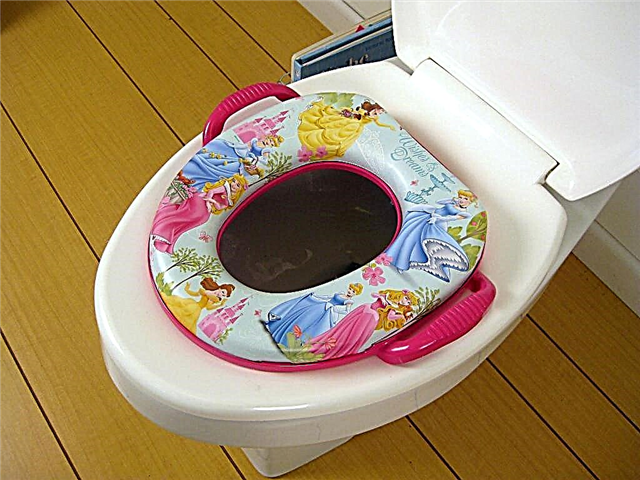
Many pregnant women experience constipation, as they can appear at different periods of gestation. If the expectant mother has 1 trimester, such an uncomfortable problem is often caused by a change in hormone levels. In the later stages, the enlarged uterus puts increased pressure on the digestive organs, which impairs the functioning of the intestines. This is dangerous for the expectant mother and the fetus, because the fecal masses accumulating in the intestinal lumen cause general intoxication.
To eliminate the painful condition, doctors will advise the woman to improve her diet and move more. However, in some cases, constipation does not go away without taking medication. If you have to resort to medication, experts choose means that will not harm the fetus, for example, prescribe a herbal preparation for a pregnant woman called "Senade".

Description of the drug and mechanism of action
"Senade" is produced in the form of tablets, which have a brown color, beveled edges, round and flat shape. On one side of the medicine there is a visible fracture line, on the other there is an embossing in the form of the word CIPLA indicating the manufacturer. The tablets are sold in blisters of 20 pieces, and one pack contains 2, 3 or 25 blisters. No prescription is required to buy Senade, and the average price of 500 tablets is 530–550 rubles.
The effect of the drug is due to the extract from hay leaves, which is contained in 1 tablet in an amount of slightly more than 93 mg. It contains sennosides A and B in the form of calcium salts. If we recalculate the dosage of "Senade" only for sennoside B, then one tablet provides 13.5 mg of such a compound.The auxiliary components of the medication include starch, sodium carmellose, milk sugar and some other substances, thanks to which the tablet is dense and keeps its shape. Shelf life "Senade" is 3 years.

Until the date marked on the package has passed, storage of the medicine is recommended at a temperature not higher than +30 degrees, away from moisture and small children.
The plant-based tablets have laxative properties that begin to appear in about 8-10 hours after taking Senade. The stomach and small intestine of sennosides pass unchanged, starting to break down only in the large intestine under the influence of normal microflora. The drug acts on receptors that are located in the colon, which leads to activation of peristalsis and stimulates emptying.

Is it allowed during pregnancy?
In the annotation to "Senada" there is a recommendation for women in the position to take such pills carefully. This means that the use of this drug during the period of bearing a child acceptable as prescribed by a doctor. The specialist will determine whether it is really needed and will select the most reasonable scheme.
Wherein in the early stages it is still advisable to refuse to use "Senade". While the most important internal organs of the fetus are being laid and its nervous system is being formed, many medications should not be taken. In most cases, in the 1st trimester, the doctor will recommend to abandon the "Senade", focusing on non-drug methods of dealing with constipation.
The second trimester is considered a more favorable time for taking medication. therefore, the use of Senade in mid-pregnancy is acceptable.


However, in the 3rd trimester, such a medicine is resorted to more often, because it is at the end of gestation that many women have difficulties with emptying, which are difficult to solve with diet and other methods.
Indications for use
The main reason for using "Senade" is constipation, which resulted in deterioration of tone and decreased motility of the large intestine. The drug is also prescribed for various diseases of the rectum and lesions of the anus, for example, if a woman is diagnosed with proctitis, anal fissure or hemorrhoids. With such pathologies, the use of "Senade" is aimed at regulating the frequency and density of the stool, which will reduce pain and promote the healing of intestinal tissues.

Contraindications and possible harm
There are quite a few restrictions on the use of Senade. Such a medicine can not be used for acute surgical pathologies, for example, with peritonitis, infringement of a hernia or intestinal obstruction. And therefore in case of severe pain in the abdomen, in no case should you drink a laxative until the woman has been examined by a doctor and the conditions that are dangerous to her life are ruled out.
Reception "Senade" also contraindicated in case of hypersensitivity to any ingredient of the tablets, dehydration, cystitis, uterine and gastrointestinal bleeding. If the expectant mother has problems with emptying, it is first important to exclude spastic constipation, since with this pathology, the use of senna is prohibited.
In case of liver or kidney diseases, the question of the possibility of taking "Senade" is decided by the doctor on an individual basis.

Since under the action of the tablets contractions of the intestinal muscle membrane are activated, there is a risk of additional stimulation of the uterus. Therefore, if the pregnancy is problematic, the use of "Senade" should be abandoned. As for the side effects, the tablets can provoke various negative symptoms, for example, stomach cramps, gas or diarrhea. Usually, unnecessarily prolonged use of "Senade" or taking the drug in an increased dosage leads to the appearance of side effects.
Due to exceeding the dose or the duration of treatment, disturbances in water-electrolyte metabolism and the work of the urinary organs may appear. In some patients, the state of the vessels worsens, a skin rash occurs, and negative symptoms from the central nervous system appear. If a woman's urine after taking Senade has become reddish-lilac or brownish, this is not a side effect, but discoloration of urine should be the reason for going to the doctor.
Another possible negative effect of the drug is hypokalemia. The risk of developing such a condition increases significantly if a woman, in addition to Senade, is prescribed licorice-based drugs, glucocorticoid hormones or thiazide diuretics. Long-term use of tablets can also affect treatment with antiarrhythmics and cardiac glycosides.

Reception instructions for pregnant women
Senade is most often taken once a day, swallowed and washed down with water. Evening is considered the best time to use the drug. - If you take pills before bedtime, then bowel movements can be expected in the morning. The traditional dosage of the drug for adults is one tablet, but the dose can be changed under the supervision of a doctor, for example, increasing to 2-3 tablets if the therapeutic effect is insufficient.
Usually, the daily dose is increased by half a tablet and the patient's condition is monitored by taking the drug in an increased dosage for several days. In the absence of defecation within 3 days, the dosage is increased again, but only as prescribed by a specialist.
How long to drink the drug is determined by the doctor, but it is contraindicated to use the drug for more than two weeks, because it affects the functions of the intestines.
What to replace?
Analogues of Senade in terms of active substances are Sennaplant and Senadexin. Both drugs work thanks to glycosides from senna, are available in tablets and can be used during pregnancy with increased caution, that is, under the supervision of a doctor. However, more often when constipation appears, doctors prefer safer remedies.
- Duphalac syrup. This viscous, sweetish liquid is available in plastic bottles and portioned sachets. It is a source of lactulose - a substance that is broken down in the colon, increases osmotic pressure, increases the volume of contents and stimulates peristaltic movements. In addition, lactulose activates the growth of beneficial microorganisms. The drug is used at any stage of pregnancy for constipation, hemorrhoids, dysbiosis and liver diseases.

- Supplement "Fitomucil"... This herbal remedy contains psyllium husks and plum fruit substances. They contain a lot of dietary fiber and, when released into the intestinal lumen, are converted into a gel that can attract water. As a result of the action of "Fitomucil", the feces soften and come out with ease. The drug is approved for diabetes mellitus, is not addictive and can be used in pregnant women.

- Microlax solution. It acts in the intestinal lumen thanks to sodium citrate, sodium lauryl sulfoacetate and sorbitol. The medication is used rectally for constipation and bowel examination. It is not absorbed, therefore it is not contraindicated in pregnancy.

- Forlax powder. This macrogol 4000 based product is mixed with water to create a citrusy white liquid that can retain water. Once inside the intestine, it increases the volume of feces and stimulates emptying. The active substance of the powder is not able to be absorbed, therefore it does not harm the fetus in any way and is allowed at any stage of pregnancy.

For information on how to deal with constipation during pregnancy, see the next video.



